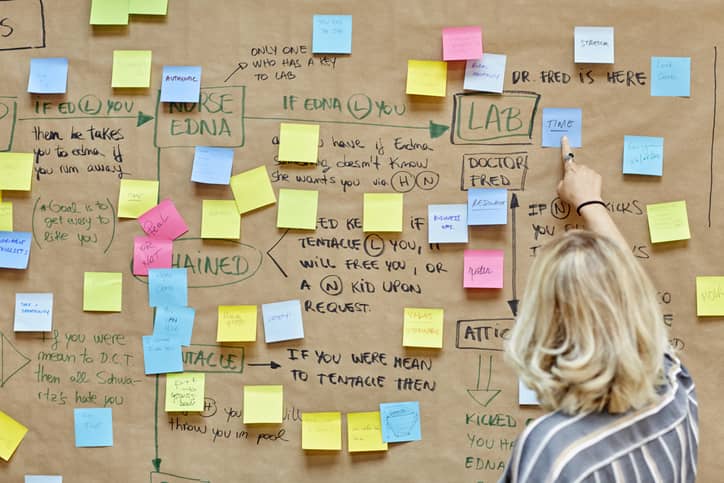A Fishbone Diagram is a visual tool that allows project teams to easily display a list of potential causes of a problem, then break these causes down into increasingly more detailed components until a link is found between a root cause and the final outcome. Another name for the diagram is the Cause and Effect Diagram or Ishikawa Diagram (named for the diagram’s inventor, Kaoru Ishikawa).
A Fishbone Diagram is an effective tool for project teams tasked with finding the root causes of a problem. It’s also useful for teams who find that their thinking on solving a challenge has fallen into a rut. The use of a Fishbone Diagram requires that a team look at all possible causes for errors and mistakes, not just those they have come up with in the past or that team members suspect is the root cause.
Because of its usefulness, a Fishbone Diagram is one of the most popular tools in Six Sigma.
History of the Fishbone Diagram
Ishikawa invented the Fishbone Diagram for the shipbuilding industry in Japan. Based on an idea for problem-solving developed earlier in the 20th century, Ishikawa’s diagram because popular in the 1960s at Kawasaki. The name Fishbone Diagram comes from the shape of the diagram, which when completed resembles the shape of a fish.
The diagram is useful in product development, where project teams list all the factors that contribute to making a product and break them down into smaller components. Mazda famously took this approach in creating the Miata sports car (the MX5), detailing the six components that would make the final product. The six main categories were:
- Styling (interior and exterior)
- Touch (the tactile experience of the car for drivers)
- Cornering (how the car handled)
- Driving (ride stability, acceleration, etc.)
- Listening (the sound experience of the engine and wind while driving)
- Braking
Today, the Fishbone Diagram is still frequently used in manufacturing and product development. In Six Sigma, it’s used with an existing product or operation to identify and eliminate the causes of defects and errors.
How To Use a Fishbone Diagram
Project teams should follow certain steps to ensure that they use a Fishbone Diagram properly. They include the following.
- Write a problem statement: This is the effect the team wants to change. They write the statement on the center-right of the diagram, with a horizontal line running across to it
- On lines branching off this centerline, list the categories where the causes are likely occurring. These typically fall into one of these areas: Methods, Machines, People, Materials, Measurement, Environment
- Team members brainstorm all the possible causes within each category, writing them on branching lines from the main category lines. Many of these lines come from asking the question: “Why does this happen?”
- Teams again ask, “Why does this happen,” this time breaking down the possible causes in each category even further
- As the diagram develops, focus efforts on areas of the chart where causes are thin
By the time a chart is completed, teams have many options on the root causes leading to the final, problematic outcome. By reviewing each potential cause in detail, teams can identify areas where they need to make changes and eliminate errors.



